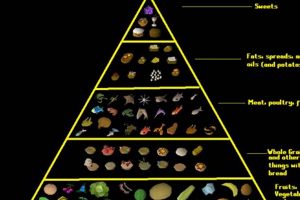The culinary landscape of Taiwan is widely recognized for its diverse and flavorful offerings, spanning from street snacks to sophisticated restaurant dishes. This richness stems from a confluence of indigenous traditions, Hokkien and Hakka influences, and Japanese culinary techniques, creating a unique and compelling food culture. For instance, a simple bowl of beef noodle soup can exemplify complex flavors developed over hours of simmering.
The island’s vibrant food scene plays a crucial role in attracting tourism and contributing significantly to the national economy. Culinary tourism supports local businesses, promotes cultural exchange, and showcases the islands agricultural abundance. Historically, food has been a central element in Taiwanese celebrations and social gatherings, solidifying its importance in the cultural identity.
This exploration delves into iconic dishes, regional specialties, and the cultural significance underpinning the nation’s renowned gastronomic reputation. It examines the impact of night markets, traditional cooking methods, and modern culinary innovations on the current food environment.
Essential Guidance for Exploring Taiwan’s Culinary Delights
Navigating Taiwan’s extensive food options requires some strategic considerations to maximize the experience and ensure a satisfying culinary journey. The following tips offer guidance for discerning diners seeking an authentic and rewarding taste of Taiwan.
Tip 1: Prioritize Local Expertise: Engage with residents or local food bloggers for recommendations on lesser-known establishments and regional specialties. Their insights can lead to experiences beyond standard tourist fare.
Tip 2: Embrace Night Markets: Visit established night markets, but also explore those in smaller towns. Each market offers a distinct selection and provides a snapshot of local culinary preferences. Be prepared for crowds and exercise caution regarding food hygiene.
Tip 3: Understand Regional Variations: Taiwanese cuisine varies significantly across different regions. For example, Southern Taiwan tends to favor sweeter flavors, while Eastern Taiwan showcases fresh seafood and indigenous ingredients. Research regional specialties beforehand.
Tip 4: Learn Basic Mandarin Phrases: While English is spoken in some tourist areas, knowing basic Mandarin phrases, particularly related to food ordering and dietary restrictions, can greatly enhance the dining experience.
Tip 5: Be Mindful of Food Hygiene: Observe food preparation practices at street vendors and smaller restaurants. Look for establishments with high turnover, as this often indicates fresher ingredients and better hygiene standards.
Tip 6: Explore Vegetarian Options: Taiwan has a substantial vegetarian population, leading to a wide variety of vegetarian and vegan dishes. Look for restaurants with clear vegetarian labeling, or ask about vegetarian alternatives.
Tip 7: Venture Beyond Familiar Dishes: While iconic dishes like beef noodle soup and stinky tofu are must-tries, be open to experimenting with less common items such as pig’s blood cake, oyster omelets, and various herbal teas.
By following these guidelines, visitors can increase their opportunities for authentic culinary experiences and discover the diverse and satisfying world of Taiwanese gastronomy. A thoughtful approach ensures a more rewarding and memorable exploration.
The next section will delve into specific dishes that epitomize the country’s culinary landscape, further enriching the understanding of this dynamic food culture.
1. Authenticity
Authenticity serves as a cornerstone in the evaluation of Taiwanese culinary offerings. It represents adherence to traditional recipes, cooking methods, and the utilization of locally sourced ingredients where applicable. The perception of authenticity influences consumer perception, contributing to a heightened sense of cultural immersion and a more positive overall dining experience. For example, a traditionally prepared bowl of beef noodle soup, made with hand-pulled noodles and slow-braised beef shank, evokes a distinct sense of place and history compared to a mass-produced version. This adherence strengthens the claim of providing the best food.
The preservation of authentic culinary practices faces challenges in a globalized food market. Cost pressures, ingredient availability, and changing consumer preferences can lead to modifications that compromise traditional integrity. However, many chefs and restaurateurs actively resist such compromises, recognizing that the perceived value of their offerings relies heavily on maintaining authenticity. Specific examples include the continued use of traditional fermentation techniques in the production of soy sauce or the dedication to using only locally grown taro in taro desserts. These specific and continuous attempts contribute to the local economy.
Ultimately, authenticity in Taiwanese cuisine functions as both a tangible element and a perceived quality. While objective measures of authenticity can be difficult to establish, the perceived adherence to tradition contributes significantly to the overall appeal and perceived value of Taiwanese culinary offerings. This perception is crucial for attracting both domestic and international visitors and for maintaining the cultural identity associated with the nation’s culinary landscape, while balancing this pursuit with modernization and innovation.
2. Fresh Ingredients
The availability and utilization of fresh ingredients are fundamentally linked to Taiwan’s reputation for culinary excellence. The island’s subtropical climate and diverse topography foster a wide variety of agricultural products, including fruits, vegetables, seafood, and meats, all of which contribute to the overall quality of the local food. This direct access to fresh, seasonal produce enables chefs and home cooks alike to create dishes that maximize flavor and nutritional value. The cause-and-effect relationship is clear: superior raw materials yield superior finished products. For example, the sweetness and texture of Taiwanese mangoes, freshly harvested, directly enhance the quality of mango shaved ice, a popular dessert. The importance of this cannot be overstated, making fresh food vital for the “best food in taiwan”.
The emphasis on fresh ingredients is evident in the daily routines of Taiwanese consumers. Morning markets are bustling hubs where individuals select ingredients for the day’s meals, prioritizing freshness and seasonality. Restaurants often source produce directly from local farmers or fishermen, promoting sustainable practices and supporting the local economy. This commitment to freshness is a distinguishing factor that separates Taiwanese cuisine from other culinary traditions where processed or preserved ingredients may be more prevalent. The integration into society is deep, and a culture of fresh food is part of what contributes to society.
In conclusion, the link between fresh ingredients and Taiwan’s renowned culinary scene is undeniable. The ready availability of high-quality raw materials, coupled with a cultural emphasis on utilizing them, directly contributes to the flavorful and satisfying nature of Taiwanese food. While challenges exist in maintaining consistent quality and addressing issues related to food safety and sustainability, the ongoing commitment to sourcing and utilizing fresh ingredients remains a cornerstone of the island’s culinary identity.
3. Culinary Diversity
Taiwan’s culinary diversity is a primary driver of its renowned food scene, directly contributing to the perception of offering the best food. This diversity stems from historical immigration patterns, geographic variations, and the integration of various culinary traditions. The confluence of Hokkien, Hakka, indigenous Taiwanese, and mainland Chinese influences has resulted in a rich tapestry of flavors, ingredients, and cooking techniques. Consequently, a diner can experience a wide range of tastes and textures within a relatively small geographic area. This abundance prevents culinary stagnation and encourages constant innovation.
The significance of culinary diversity extends beyond mere variety; it also reflects the historical and cultural narratives of the island. Hakka cuisine, for instance, emphasizes preserved ingredients and robust flavors, reflecting the community’s history of agricultural hardship. Indigenous cuisine showcases the unique flora and fauna of Taiwan’s mountainous regions, offering dishes that are distinct from mainstream Han Chinese fare. Street food, another facet of this diversity, provides accessible and affordable representations of these various culinary influences. The practical application of this understanding lies in appreciating the cultural context behind each dish, enriching the overall dining experience. In areas like Taipei’s Yongkang Street, a single block can house restaurants specializing in Shandong dumplings, Cantonese roasted meats, and traditional Taiwanese snacks, illustrating the concentrated nature of this culinary melting pot.
In conclusion, culinary diversity serves as a critical component of Taiwan’s culinary identity, fostering innovation, preserving cultural heritage, and offering a wide range of dining experiences. While challenges exist in preserving the authenticity of specific culinary traditions amidst globalization, the overall effect of this diversity is to elevate the island’s gastronomic reputation, solidifying the perception of Taiwan as a premier destination for food enthusiasts. The sustained appreciation and promotion of this diversity are essential for maintaining its position as a culinary leader.
4. Regional Variations
Regional variations in cuisine are paramount to understanding the breadth and depth associated with the perception of Taiwan’s culinary excellence. These variations reflect distinct geographic, climatic, and historical influences that shape local ingredients, cooking techniques, and flavor profiles. Evaluating these regional differences provides a more nuanced appreciation of the claim that Taiwan offers the best food.
- Northern Taiwan: Emphasis on Light Flavors and Seafood
Northern Taiwan, including Taipei, often features dishes with lighter, more delicate flavors, reflecting the area’s proximity to the coast and its history as a center of political and economic influence. Seafood plays a prominent role, with dishes showcasing fresh catches prepared with minimal seasoning to highlight their natural taste. Examples include steamed fish and seafood congee, both emphasizing simplicity and freshness. These light and fresh qualities contribute to the region’s culinary distinctiveness.
- Central Taiwan: Fusion and Agricultural Abundance
Central Taiwan benefits from fertile plains, resulting in an abundance of agricultural products. This region is known for its fusion cuisine, blending various culinary influences. Taichung, a major city in Central Taiwan, is credited as the origin of bubble tea, a globally recognized beverage. The fertile land also supports a variety of vegetable dishes. The intersection of agricultural wealth and culinary innovation creates a unique identity.
- Southern Taiwan: Sweetness and Savory Balance
Southern Taiwan is characterized by a preference for sweeter flavors compared to other regions. This inclination extends to both savory and sweet dishes, where sugar is frequently used as a seasoning. Tainan, often considered the historical food capital, offers a variety of snacks and dishes that balance sweetness with savory elements. Examples include danzai noodles and milkfish dishes, which often incorporate a subtle sweetness. This regional preference shapes the culinary landscape, contributing to the diverse range of tastes found across the island.
- Eastern Taiwan: Indigenous Cuisine and Natural Ingredients
Eastern Taiwan, with its rugged coastline and mountainous terrain, is known for its indigenous cuisine and reliance on natural ingredients. The Amis, one of Taiwan’s largest indigenous groups, utilize local plants and animals in their traditional dishes. Dishes are often cooked simply, allowing the natural flavors to shine through. The remoteness and unique ecosystem of Eastern Taiwan have fostered a distinct culinary tradition. The connection of food to cultural heritage reinforces local food choices.
The culinary excellence attributed to Taiwan is, therefore, not a monolithic entity, but rather a collection of distinct regional cuisines each contributing unique flavors and culinary traditions. The nuanced understanding of these regional variations is essential to truly appreciate the island’s diverse culinary landscape and to accurately assess the claim that Taiwan offers the best food. The dynamic inter-regional diversity is an important part of a whole, not to be taken for granted.
5. Street Food Culture
The vibrant street food culture in Taiwan is inextricably linked to the perception of its culinary excellence. This phenomenon is not merely a collection of vendors selling snacks; it represents a fundamental aspect of Taiwanese society, directly influencing the accessibility, diversity, and authenticity of the island’s gastronomic offerings. The availability of diverse dishes at affordable prices democratizes culinary experiences, allowing individuals from all socioeconomic backgrounds to participate in and contribute to the food culture. This accessibility, in turn, fuels innovation and competition, ensuring a constant stream of new and refined dishes. For instance, the evolution of bubble tea from a local street vendor innovation to a global phenomenon exemplifies this dynamic.
The importance of street food culture as a component of Taiwan’s culinary appeal extends beyond affordability and accessibility. Street food vendors often act as custodians of traditional recipes and cooking techniques, preserving culinary heritage that might otherwise be lost to commercialization. Many popular Taiwanese dishes, such as beef noodle soup and oyster omelets, originated as street food and have since become iconic national dishes. Furthermore, the open-air nature of street food markets encourages direct interaction between vendors and consumers, fostering a sense of community and cultural exchange. This close relationship ensures that vendors remain responsive to consumer preferences, adapting and improving their offerings based on immediate feedback. The night markets, a central element, often serve as barometers of culinary trends, reflecting the ever-evolving tastes of the population.
In conclusion, the connection between street food culture and the perception of Taiwan’s exceptional cuisine is multifaceted and profound. It is a vital channel for culinary innovation, cultural preservation, and community engagement. While challenges exist in maintaining hygiene standards and regulating informal economic activity, the overall contribution of street food to Taiwan’s culinary identity is undeniable. Recognizing and supporting this unique cultural phenomenon is crucial for sustaining the island’s reputation as a global food destination and safeguarding the traditions that define its culinary landscape. A continued and growing integration of street food in tourism and cultural exchange will ensure its preservation and promotion.
6. Flavor Complexity
Flavor complexity constitutes a critical element in evaluating Taiwan’s culinary reputation, particularly in discussions surrounding the notion of offering the best food. This characteristic extends beyond mere taste, encompassing aroma, texture, and the interplay of various ingredients to create a multifaceted sensory experience. The deliberate layering of flavors and the skillful manipulation of cooking techniques directly influence the perceived quality and satisfaction derived from Taiwanese cuisine.
- Umami and Savory Depth
Umami, often described as a savory or meaty taste, plays a significant role in Taiwanese dishes. Fermented ingredients such as soy sauce, black beans, and dried seafood contribute depth and richness. The skillful incorporation of these elements results in dishes that are not simply salty but possess a complex and satisfying savoriness. For example, the slow braising of pork belly in soy sauce, rock sugar, and aromatics exemplifies the layering of umami and sweet flavors, resulting in a deeply satisfying experience. This type of layering makes food much better.
- Sweet and Sour Contrasts
The interplay of sweet and sour flavors is a common characteristic in many Taiwanese dishes. This balance often involves the use of vinegar, sugar, and fruits to create a harmonious yet contrasting taste profile. For instance, sweet and sour pork, a ubiquitous dish in Taiwanese restaurants, exemplifies this principle. The combination of crispy pork, tangy sauce, and the sweetness of pineapple or bell peppers creates a dynamic flavor experience that engages multiple taste receptors, leading to an improvement in food perception.
- Herbal and Aromatic Infusions
The integration of herbs and aromatics is another key aspect of flavor complexity in Taiwanese cuisine. Ingredients such as ginger, garlic, scallions, cilantro, and various Chinese medicinal herbs are used extensively to add depth and nuance to dishes. These ingredients not only contribute distinct flavors but also offer purported health benefits. Beef noodle soup, for example, often includes star anise, cinnamon, and Sichuan peppercorns, which contribute to a complex aromatic profile that enhances the overall dining experience. The integration helps the overall dining experience.
- Textural Variety
Textural contrast complements flavor complexity in Taiwanese dishes. The combination of crispy, chewy, soft, and smooth textures enhances the sensory experience and adds another layer of interest. Examples include oyster omelets, which feature a combination of crispy edges, chewy tapioca starch, and soft oysters, or stinky tofu, which presents a stark contrast between its pungent aroma and its creamy interior. The use of different textures is very common.
These interconnected facets of flavor complexity contribute significantly to the perception of Taiwan as a culinary destination. The deliberate layering of flavors, the skillful balance of sweet, sour, savory, and aromatic elements, and the incorporation of diverse textures create a multifaceted sensory experience that distinguishes Taiwanese cuisine and bolsters the argument for its position as offering some of the best food available. This perception reinforces Taiwan’s prominence in the global culinary landscape.
Frequently Asked Questions About the Best Food in Taiwan
The following addresses common inquiries and clarifies misconceptions regarding Taiwan’s culinary offerings, with a focus on objective information.
Question 1: What factors contribute to the high regard for Taiwanese cuisine?
Several elements contribute to Taiwan’s culinary reputation, including a diverse range of culinary influences (Hokkien, Hakka, indigenous, and Japanese), an emphasis on fresh, locally sourced ingredients, and a vibrant street food culture that promotes accessibility and innovation. Furthermore, the regional variations in cooking styles and flavor profiles offer a broad spectrum of culinary experiences.
Question 2: Is the food in Taiwan generally spicy?
While some dishes incorporate chili peppers, Taiwanese cuisine is not predominantly spicy. Many dishes prioritize a balance of sweet, savory, and sour flavors. Chili is often offered as a condiment, allowing individuals to adjust the level of spiciness according to their preferences. The intensity of flavors varies according to the region. The regional aspect is important.
Question 3: Are there options for vegetarians and vegans in Taiwan?
Yes, Taiwan has a substantial vegetarian and vegan population, resulting in a wide variety of vegetarian and vegan dishes. Many restaurants offer vegetarian alternatives, and specialized vegetarian restaurants are prevalent, especially in urban areas. Temples also frequently provide vegetarian meals to visitors.
Question 4: What are some must-try dishes for a first-time visitor to Taiwan?
Recommended dishes include beef noodle soup, xiaolongbao (soup dumplings), stinky tofu, oyster omelets, and bubble tea. These dishes represent a range of flavors and textures and are widely available across the island. However, culinary exploration should extend beyond these popular options to fully appreciate the diversity of Taiwanese cuisine. It is important to have diversity.
Question 5: Is it safe to eat street food in Taiwan?
In general, street food in Taiwan is considered safe to consume. However, it is advisable to observe hygiene practices, such as selecting vendors with clean-looking stalls and high turnover. Also, it is important to be aware of the vendor’s process and observe food preparation. Opting for established night markets with regulated food safety standards can further mitigate risks.
Question 6: How does the food in Taiwan compare to mainland Chinese cuisine?
While Taiwanese cuisine shares roots with mainland Chinese cuisine, it has evolved into a distinct culinary tradition. Taiwanese cuisine incorporates indigenous ingredients and Japanese influences, resulting in unique flavors and cooking styles. Furthermore, there are differences in the level of sweetness and the use of certain ingredients, such as seafood.
In summation, the culinary landscape of Taiwan is defined by its historical influences, cultural integration, and devotion to culinary quality. It attracts a wide audience, domestic and foreign.
The subsequent section will focus on the future trajectory of Taiwanese cuisine, exploring potential trends and challenges.
The Enduring Appeal of Taiwanese Gastronomy
This exploration has illuminated the multifaceted dimensions underpinning Taiwan’s lauded food culture. From the dedication to fresh, local ingredients and the preservation of authentic culinary practices, to the vibrant diversity born from historical influences and regional specialties, the attributes contributing to the perception of the “best food in taiwan” are demonstrable and significant. The accessible street food culture and the intentional layering of complex flavors further solidify this reputation, creating a compelling and unique culinary landscape.
Sustaining this culinary legacy requires ongoing commitment to quality, innovation, and cultural preservation. As Taiwan navigates the challenges of globalization and evolving consumer preferences, it is imperative to safeguard the traditions and practices that define its gastronomic identity. Continued investment in local agriculture, support for culinary education, and promotion of sustainable tourism practices will be crucial in ensuring that Taiwan remains a prominent and respected destination for food enthusiasts worldwide. The focus should be on continued food enhancement, to become better, and the world will appreciate the unique experience of eating “best food in taiwan”.







